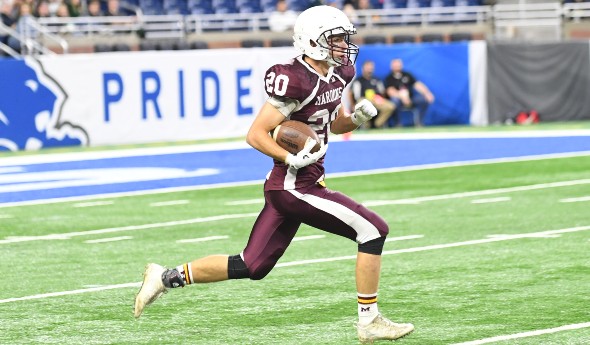
Heads and Heat
August 16, 2012
We are engaged in very serious discussions. They’re not only complicated, with unintended negative consequences possible from what are thought to be positive actions; they’re also a matter of life and death.
The topic is football – the high school sport under most scrutiny today and suffering from the most criticism it’s seen since the 1970s when catastrophic neck injuries spiked, liability awards soared, many insurers balked, and most helmet manufacturers abandoned the business altogether.
During recent years we have learned about the devastating long-term effects of repeated blows to the head; and we’re trying to reduce such hits. We’ve learned that 70 percent of concussions in football result from helmet-to-helmet contact, and we’re trying to have coaches teach blocking and tackling differently and have officials penalize “high hits” consistently and rigorously.
During the past several years we’ve learned that serious heat illness and heat-related deaths are 100 percent preventable, yet nationwide there were 35 heat-related deaths in high school football alone from 1995 to 2010; and we’re promoting practices that acclimatize athletes more gradually than “old school” traditionalists might advocate.
As we simultaneously address issues of heads and heat in football, some coaches may think we’re being overbearing, while many in medical fields say we’re out of date, citing higher standards of the American Academy of Pediatrics, National Athletic Trainers Association and National Federation of State High School Associations, as well as many of our counterpart organizations across the country.
As we consider in-season changes to improve athlete acclimatization and reduce blows to the head, we should be open to making out-of-season changes that work toward rather than in opposition to those objectives. There can be no sacred cows. The topic is too serious.
Ultimately, if we err in the outcome of this year’s discussions about heads and heat in football, it must be on the side of safety, on minimizing risks for student participants. They deserve it and, once again, the sport of football needs it.

Moment: Menominee Achieves Finals 1st
December 4, 2020
By John Johnson
MHSAA Director of Broadcast Properties
Menominee’s march from the southern tip of the Upper Peninsula to Ford Field had some storybook feel about it – a team which overcame injuries – and mixed in a grinder of a Semifinal victory to bring the chants of “U.P. Power” to the Motor City and the MHSAA Football Playoff Finals in 2016.
The Maroons’ good fortune ran out that Thanksgiving weekend against a superior Grand Rapids West Catholic squad in the Division 5 championship game, but Menominee’s trip will long be remembered for a state championship game record set during the second half.
Liam Putz, who had earlier in the game set a Finals record with a 47-yard field goal for the Falcons, was lined up to attempt a 42-yard placement midway through the third quarter. Sam Larson broke through and blocked the kick. Hunter Hass picked up the ball with nothing but green turf and yard stripes in front of him and returned it for a touchdown, the first time that had ever happened in the Finals. The return went for 76 yards, which became the record for the special teams play.
“All week we were practicing to block their punt, and it just so happened that we blocked their field goal,” Hass said after the game. “I saw the ball. I just picked it up and ran into the end zone, just trying to get some points to get some momentum going for our team.”
West Catholic won the game, 43-7.

